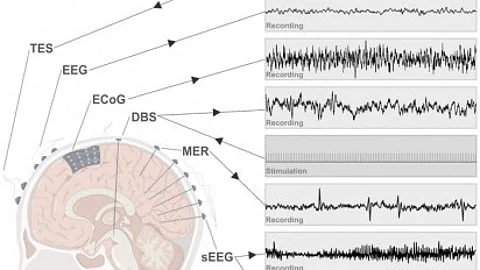Brain-Machine Interface (BMI, also known as Brain-Computer Interface) provides a new dimension for a human to interact with machines and the environment. Brain-machine interfaces help restore or improve human physical or mental functions. Scientists investigate a variety of technologies to interact with the brain at different levels.
The cerebral cortex has long been the research target of the brain-machine interface. By recording neural activity in multiple cortical regions to understand human intent, researchers enable paralyzed patients to control robotic arms and prosthetics and help disabled people communicate effectively.
Conventional brain-computer interfaces allow us to decode sensory and motor signals such as visual responses, hand movements, and speech in a constrained lab environment. It is still challenging to apply these technologies to everyday life.


